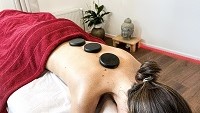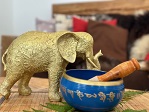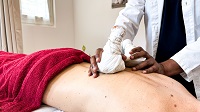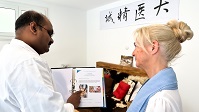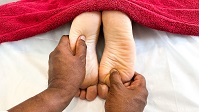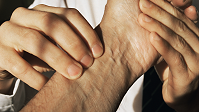Pain therapy

Ayurvedic pain therapy focuses on balancing the body's doshas (vata, pitta and kapha) to address the cause of the pain and not just alleviate the symptoms. According to Ayurvedic principles, pain is often the result of an imbalance in the vata dosha, which controls movement and nerve impulses in the body.
Key therapies in Ayurvedic pain treatment:
Abhyanga and Marma (oil massage):
In the Ayurvedic tradition, regular oil massage, also known as snehana, is a highly effective form of therapy for all types of ailments. The massage helps to relieve pain because it tames Vata, relieves joint and muscle stiffness, promotes blood circulation, mobilises toxins and relaxes the body (preferably once a week).
Warm herbal oils are massaged into the skin to improve circulation, relax the muscles and relieve nerve pain. Depending on the type of pain, special oils such as Mahanarayana or Dhanwantharam are used.
Stiffness and inflammation Swedana (Local herbal vapour therapy):
Helps in relieving stiffness and inflammation by opening the channels of the body and promoting perspiration.
Pichu: Applying cotton soaked in warm oil directly to the painful area to reduce inflammation and promote healing. A special anti-inflammatory oil from Kerala called ‘Murivenna’ is used for this.
Headache and shoulder pain nasya (nasal therapy):
Injecting herbal oils into the nostrils relieves headaches and shoulder pain as it is said to release blockages in the upper chest and neck area.
Herbal remedies: Use of natural anti-inflammatory herbs such as ashwagandha, turmeric, guggulu and shallaki to treat chronic pain conditions such as arthritis, fibromyalgia and sciatica.
Diet and lifestyle changes:
Diet is also a powerful healer. Stick to a Vata-relieving diet of warm, moist, mildly flavoured, nutritious foods for a month and see if it makes a difference. Sweet, salty and sour flavours are all vata soothing - just make sure you find natural, healthy sources of sweetness (such as ripe plums, pears or dates) and don't overdo it. Overeating aggravates vata.
A diet rich in anti-inflammatory foods and a lifestyle that reduces stress and emphasises good posture play an important role in pain management.
Yoga and meditation:
Gentle stretches, breathing exercises (pranayama) and meditation techniques help to manage pain, especially chronic conditions such as back pain or migraines. Systematic relaxation in Shavasana (posture) can reduce muscle spasms, relieve tension and calm the mind in a natural way.
Ayurveda takes a holistic approach and emphasises the connection between mind, body and spirit in the treatment of pain. It is often recommended to consult with our Indian, experienced and qualified Ayurvedic practitioner to create a personalised treatment plan.
In the Ayurvedic tradition, regular oil massage, also known as Snehana, is revered as a highly effective form of therapy for all kinds of ailments. Massage helps to relieve pain because it tames vata, relieves joint and muscle stiffness, promotes circulation, mobilises toxins and relaxes the body. Find a qualified therapist to work with once a month. (Once a week would be even better.)
